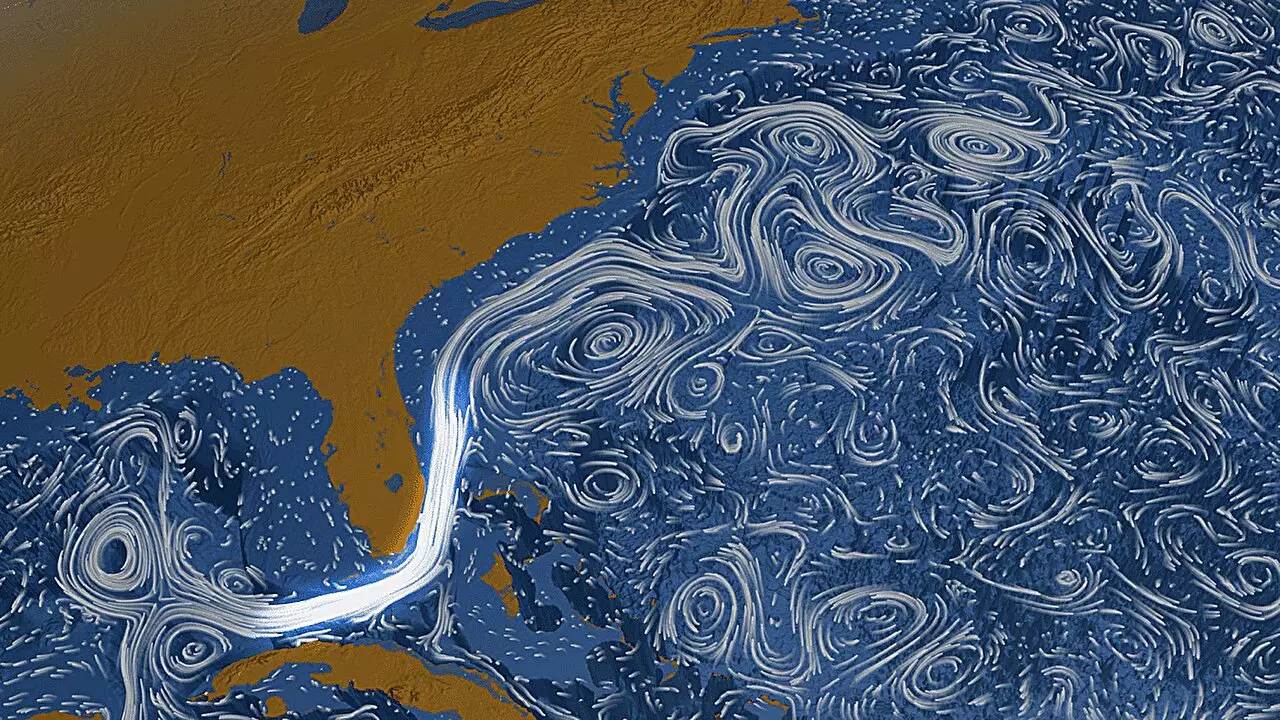The ocean is a dynamic entity, playing a crucial role in regulating Earth’s climate. Among its many currents, the Atlantic Meridional Overturning Circulation (AMOC) stands out due to its significant impact on climate patterns, particularly in the North Atlantic region. Scientists are keenly observing alterations in these large-scale ocean circulations to understand better how a warming planet influences them. Of particular intrigue is the Florida Current, a vital artery of the AMOC, which has surprisingly shown stability over a recent four-decade period despite widespread predictions of a looming weakening of the AMOC.
The Atlantic Meridional Overturning Circulation: A Global Connector
The AMOC is integral to the global climate system, facilitating the movement of warm, salty water from the tropics northward to the North Atlantic, where it cools and sinks. This intricate process essentially connects different ocean basins, allowing for the transport of heat, carbon, freshwater, and nutrients across vast distances. Such circulation is essential not just for marine life but for broader climatic influences, including weather patterns and sea level rise. It has been suggested through advanced climate models and recent reports that the AMOC could experience a 45% reduction in strength this century. These predictions raise alarm bells; however, observational data have not substantiated a significant downturn in AMOC’s behavior in recent years.
New Research Insights from Florida Current Observations
Recent research conducted by a collaboration of scientists from the NOAA’s Atlantic Oceanographic and Meteorological Laboratory, the University of Miami, and the National Oceanography Center in the U.K. has shed light on the Florida Current. This research found that contrary to earlier assumptions, the strength of the Florida Current has remained stable over the past forty years. Characterized as one of the fastest ocean currents, the Florida Current initiates in the Gulf of Mexico, flows along Florida’s eastern coastline, and eventually transitions into the Gulf Stream, which has significant climatic ramifications.
The continuous monitoring through NOAA’s Western Boundary Time Series (WBTS) project offered the deepest insights into the Florida Current’s behavior. Established in 1982, this long-term observation is unprecedented, providing a vital data set for understanding oceanic circulation. Collaborations with scientific programs in the U.K. and the University of Miami have enhanced the robustness of the observational framework, leading to deeper insights into the AMOC’s functioning.
The study utilized an innovative approach by analyzing voltage measurements from a submarine cable that spans the seafloor between Florida and the Bahamas. These voltages fluctuate as the Florida Current carries salt ions, revealing data about the current’s transport characteristics. The research revealed a significant correction was needed for voltage measurements due to gradual changes in Earth’s magnetic field, leading to new insights about stability over previous claims that indicated a decline in the Florida Current.
Through this correction, the study uncovered that the previously reported negative trend in the Florida Current was substantially reduced, negating earlier claims of a statistically significant decline. Lead author Denis Volkov remarked on the importance of this new analysis, suggesting that existing models predicting AMOC weakening might not be as evident as thought, at least in relation to the Florida Current.
This stability within the Florida Current raises important questions for climate science. Could it be that, while models predict AMOC decline, present observations do not reflect this shift? The notion that the AMOC could weaken without correlating changes in the Florida Current merits further investigation. Volkov depicts a scenario where the AMOC might still be on a different trajectory, indicating possible interdecadal variability patterns that are yet to be understood fully.
Furthermore, while this new observational record holds promise, scientists stress the necessity of continuous monitoring. As the study indicates, a two-decade period of observation, while substantial, is insufficient to form definitive conclusions on long-term climate trends. Nonetheless, the findings underscore the value of sustained, high-quality observations which are instrumental for unraveling the complexities of ocean–climate interactions.
The insights gained from studying the Florida Current significantly contribute to our understanding of AMOC dynamics and offer a crucial perspective on climate variability. As researchers continue to unravel the complexities of oceanic circulation, the emphasis on robust observational networks grows ever more critical. With evolving climate patterns posing significant threats to our planet, the stabilization exhibited by the Florida Current provides a glimmer of understanding amid the uncertainties posed by global change, highlighting the critical need for ongoing scientific inquiry. In this realm of science, the journey continues.

